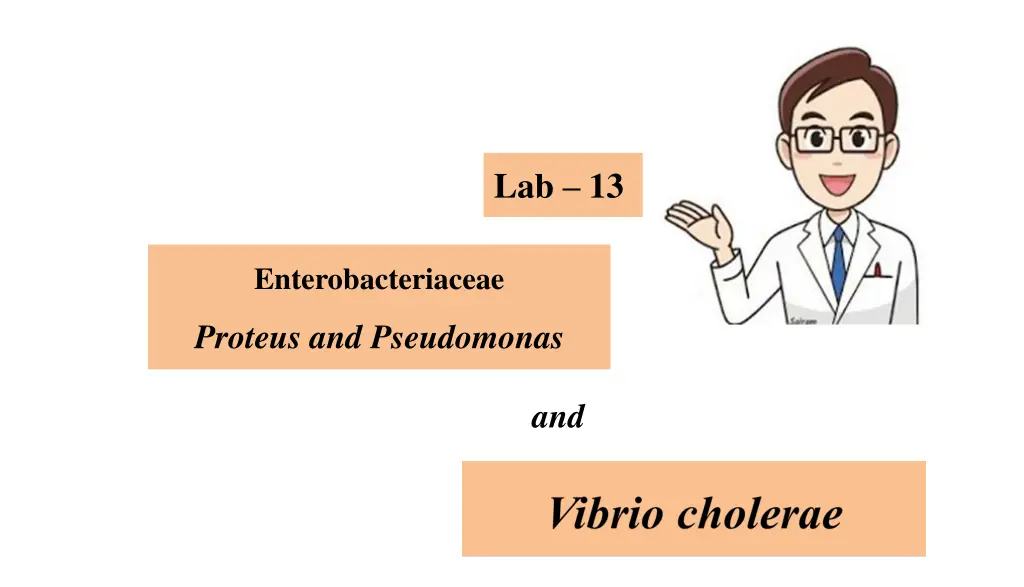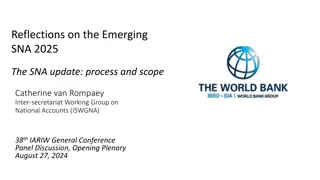
Proteus and Pseudomonas Bacteria: Characteristics, Laboratory Diagnosis, and Serology
Learn about Proteus and Pseudomonas bacteria, including their characteristics, laboratory diagnosis methods, and serology tests. Proteus bacteria, such as Proteus mirabilis and Proteus vulgaris, are known for causing UTIs and wound infections, while Pseudomonas aeruginosa is a pathogenic species associated with skin and urinary tract infections. Explore their distinctive features, biochemical tests, and serological diagnostics through detailed information and images.
Download Presentation

Please find below an Image/Link to download the presentation.
The content on the website is provided AS IS for your information and personal use only. It may not be sold, licensed, or shared on other websites without obtaining consent from the author. If you encounter any issues during the download, it is possible that the publisher has removed the file from their server.
You are allowed to download the files provided on this website for personal or commercial use, subject to the condition that they are used lawfully. All files are the property of their respective owners.
The content on the website is provided AS IS for your information and personal use only. It may not be sold, licensed, or shared on other websites without obtaining consent from the author.
E N D
Presentation Transcript
Lab 13 Enterobacteriaceae Proteus and Pseudomonas and
Proteus Gram-ve , actively motile pleomorphism rods. CausesUTI, wound infections, pneumonia, septicemia -meningitis. Four species: 1. Proteus morgani, 2. Proteus vulgaris 3. Proteus mirabilis 4. Proteus rettgeri are distinguished from each other on the bases of fermentation of maltose, mannitol, sucrose . All Proteus species are indole +ve exceptProteus mirabilis. All Proteus do not ferment mannitol exceptProteus rettgeri (late fermenter).
Proteus Laboratory diagnosis: 1. Specimen: urine, exudates, swabs , Blood, CSF. 2. Smear & staining: G-ve bacilli, peomorphic 3. Culture 1. MacConkey Proteus appear as a non- lactose fermenter. (pale yellow colonies). 2. EMB . There is no metallic sheen on EMB. 3. Blood agar highly motile ( swarming), therefore they produce swarming spread overgrowth on blood agar plate .swarming is characterized by expanding rings (waves) over the surface of blood agar. Blood agar (swarming)
Proteus 4. Biochemical tests I M Vi C + TSI K / A Gas +ve H2S +ve Or ; A / A Gas +ve H2S +ve Urease test: + ve Converting the slant of urea agar from yellow color to pink- purple color due to the utilization of urea by urease enzyme(produced by proteus) and the formation of ammonia converting the medium into an alkaline pH and producing a pink purple color by a change in the phenol red indicator. Urease test
Proteus 5. Serology Weil- felix test Certain serotypes of proteus (OX19,OX2,OXK) have cross-reacting Ags with some Rickettsias (obligatory intracellular Gram-negative bacteria, zoonotic pathogens cause infections that disseminate in the blood to many organs). It serves as a useful clinical tool to determine if a person has been infected with rickettsia . Mixing the serum of a patient suspected to have rickettsia infection with somatic proteus Ag. Ag-Ab agglutination indicating +ve results; ( weil- felix test +ve).
Proteus The Weil-Felix is based on cross reaction which occur between antibodies produced in acute reckettsial infection with antigens of OX (OX2, OX19, and OXK) strains of proteus sp. Used to diagnosed typhus, spotted fever and other reckettsial diseases.
Pseudomonas Members of this group are saprophytes in water and soil. Only one spp is pathogenic to human: pseudomonas aerugenosa (pyocyanae) Gram-negative, non spore forming, rod-shaped bacteria. Motile species possess polar flagella. They are strictly aerobic. The spectrum of clinical disease of P. aerugenosa include: 1. Skin infection especially at burn site, trauma and wounds. 2. Urinary tract infection especially following catheterization. 3. Respiratory tract infection (pneumonia) in patient with cystic fibrosis. 4. Otitis external and eye infection. 5. Meningitis after lumber puncture.
Pseudomonas Pseudomonas pigments 1. pyocyanin . Blue color 2. pyoverdin .green (fluorescent) color 3. Pyorubin .. reddish brown color 4. Pyomelanin . Black color Some strains of pseudomonas however do not produce any of these pigments.
Laboratory diagnosis 1. Specimen: urine , pus, blood, CSF, sputum, swab. 2. Staining gram n gative non spore former and non capsulated 3. Culture: 1. MacConkey Pseudomonas appears as a non lactose fermenter. 2. EMB......there is no metallic sheen on EMB agar. 3. Nutrient agar.... Pseudomonas aerogenosaproduces a blue green pigment and a fruity aroma. 4. Milk agar may be added to nutrient agar to give a white background.
Pseudomonas aerogenosa Pseudomonas on nutrient agar Pyocyanine Pigment
Pseudomonas aerogenosa 3. Biochemical tests Ferment glucose with acid production without gas Oxidase +ve I M Vi C - - - + TSI: no change k/k Gas ve H2S ve
Vibrio cholerae Is a Gram negative comma-shaped bacterium motile with a polar flagellum causes cholera in humans. The types of V. cholerae according to their antigenic structure; a-classical type b- El tor c- ogawa d- inaba e- hikojima V. cholerae enters the human body through ingestion of contaminated food or water. The bacterium enters the intestine, imbeds itself in the villi, replicates and releases cholera toxin.
Vibrio cholerae Laboratory diagnosis: 1. Specimen: Stool, rarely vomit. Transport media include a. Sea salt medium b. Alkaline peptone water. enrichment broth. 2. Staining: gram negative bacilli or comma shaped.
Vibrio cholerae Culture: TCBS (Thiosulfate citrate bile salt sucrose medium) is a selective agar medium Indicator bromothymol blue .Control is green ( prepared as plates ) After inoculation with suspected bacteria and a 18 to 24 hours incubation at 35 to 37 C on TCBS agar, colonies of V. cholerae will appear as yellow, shiny colonies, 2 to 4 mm in diameter. The yellow color is caused by the fermentation of sucrose in the medium. Sucrose-non- fermenting organisms, such as V. parahaemolyticus, produce green to blue-green colonies.
Vibrio cholerae Thiosulfate-Citrate-Bile Salts-Sucrose (TCBS) Agar
Vibrio cholerae Biochemical tests: Vibrio cholerae appears as a late lactose fermenter - Motile - Urease -ve - Oxidase +ve - TSI ; A or k /A Gas ve, H2S ve
Vibrio cholerae IMVIC Bacteria spp. I M VI C + _ + Vibrio cholerae + +
Vibrio cholerae Triple Sugar Iron TSI Bacteria spp. H2S Butt Slant Gas - Acid Acid or Alkaline Vibrio cholerae _
Vibrio cholerae Motility Test Bacteria spp. motility + Vibrio cholerae
Thank You Thank You






















